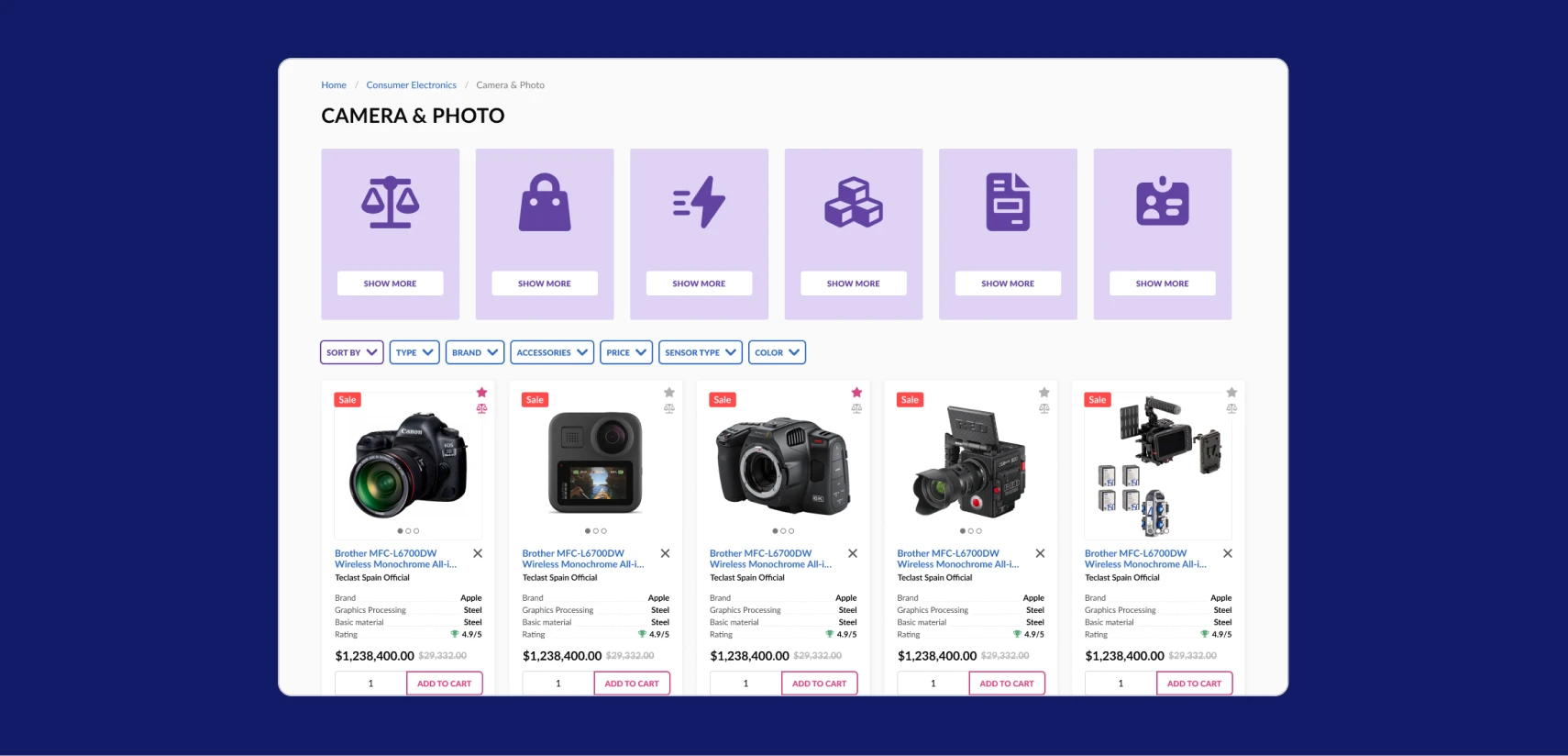eCommerce Cost Guide
Discover the true costs of ecommerce platforms in our free guide.
Success Stories
See how industry leaders succeed with Virto.
Virto & Gladcloud
Boost ecommerce with advanced marketing.









Discover the true costs of ecommerce platforms in our free guide.
See how industry leaders succeed with Virto.
Boost ecommerce with advanced marketing.
If a business can provide a unique, highly specialized and tailored customer experience (CX), this might become a significant competitive advantage. An excellent CX can beat any competition, even with a larger market presence and/or more budget/revenue. What is more, it is extremely hard to copy a unique CX with all its internal interactions and relations.
A modern headless, API-based ecommerce platform provides the means to build such a unique CX. Businesses that use other solutions, such as SaaS or single-vendor monoliths, will encounter certain troubles (or fears) when trying to tailor CX to specific customer needs, such as:
When the platform itself is not flexible, the business is forced to adapt its processes and CX to the software capabilities, not to the business' or customers' needs. This results in non-unique solutions that are not optimal and can easily be copied by the competition using the same software. To avoid this, a business must place its requirements above the software functions; the software must work for a business, not vice versa.
If the existing platform does not meet modern requirements and does not support the composable paradigm (i.e., it cannot be adapted by adding/replacing certain services), a business may be forced to replace it completely, delivering the new solution in a single package. This leads to huge gaps in user experience. Even if the new software is better, customers may not appreciate it because they need to spend time and effort learning how to use it. To avoid this, a business should build a new solution on top of the existing one, retaining familiar functionality and gradually improving it.
Many B2B businesses consider their good relations with customers as a key to their success. These relations were built over time and are based on salespeople knowing their customers' needs and wishes. Moving these relations online will lose the 'human touch'. The answer is simple: there is no need to sever human relations. The business should not force its customers to go online, but instead provide them with an omnichannel experience.
The following strategies can be used to help users adopt the ecommerce platform:
As customer experience is crucial to the success of the ecommerce platform, it is important to follow certain principles that help support it at a prominent level. Read the white paper and discover these seven principles.


